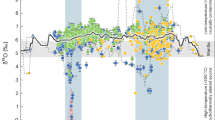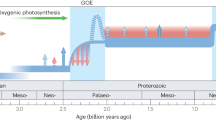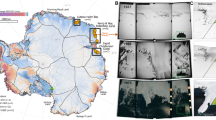Abstract
THE sentence which Teichert objects to is, when taken in context, a criticism of Nicholas's assumption1 of the existence of an ocean between Southern Europe and Africa. In geological discussions an ocean may be defined as a deep basin floored by simatic crust generated by the accretion of basaltic material at linear ridges of active volcanism and seismicity (“mid-ocean ridges”). Oceanic growth is accomplished by the process unfortunately known as “seafloor spreading”. The Red Sea is an example of an incipient ocean and the Atlantic an example of a fully fledged ocean. This definition would exclude those expanses of salt water usually included in oceans which cover continental crust. These expanses are seas. Clear differentiation between oceans and seas is important in palaeogeographic and tectonic discussions. Nicholas1 was clearly using his Tethys in the sense defined above with the plate tectonic embellishment of a subducting margin. My communication2 arose out of a worldwide, quantitative analysis of Ordovician biogeography (unpublished). The conclusion that the faunal distributions found are best interpreted in terms of oceanic barriers rather than in terms of climate or other ecological factors is also justified elsewhere. Johnson's Provinciality Index3 was used to compare pairs of geographical areas. This index is calculated by dividing the number of common fossil genera by twice the number of endemic genera in the smaller faunal list. Values above one are taken to indicate some degree of co-provincialism. In this study values have ranged from 0–5.2, with most values falling within the range 0.1–0.7. Of all pairs of areas, the comparison between North Africa and Southern Europe gave, by far, the highest values (Fig. 1). On the other hand, indices between Southern Europe and Northern Europe were very low (Fig. 1). Somewhat more sophisticated computerized studies of Cambrian faunal provinces are in preparation by Burrett and Richardson. These studies further support free faunal interchange between Southern Europe and Africa but show a very clear dichotomy between Northern and Southern Europe. These connexions have been clearly shown by Repina4 in a series of maps. In addition the non-existence of archaeocyathids in Northern Europe but their abundance in Southern Europe is further evidence for a Mid-European Ocean but indicates nothing about a Tethyan Ocean. Faunal similarities between Southern Europe and Africa continued through the Palaeozoic5 and into the Triassic when the “Tethys itself could have been no more than a minor obstacle to the north-south migration of land animals”.6 Rifting probably started in the Triassic7 and by the Jurassic a reasonably large Tethyan Ocean was in existence8.
This is a preview of subscription content, access via your institution
Access options
Subscribe to this journal
Receive 51 print issues and online access
$199.00 per year
only $3.90 per issue
Buy this article
- Purchase on Springer Link
- Instant access to full article PDF
Prices may be subject to local taxes which are calculated during checkout
Similar content being viewed by others
References
Nicholas, A., Nature, 236, 221 (1972).
Burrett, C. F., Nature, 239, 155 (1972).
Johnson, J. G., Amer. J. Sci., 270 (1971).
Repina, I., Akad. Nauk, SSR Siberia Inst. Geol. Geofiz. (Nauka, Moscow, 1969).
Boucot, A., Johnson, J. G., and Talent, J. A., Geol. Soc. Amer. Spec. Pap., 119 (1969).
Charig, A. J., in Faunal Provinces in Space and Time (edit. by Middlemiss, F.) (Seel House Press, Liverpool, 1971).
Trumpy, R., Bull. Geol. Soc. Amer., 71, 843 (1960).
Dercourt, J., Bull. Soc. Geol. France, 12(7), 261 (1970).
Sdzuy, K., in Systematics Assoc. Publ. (edit. by Adams, C. G., and Ager, D. V.), 7 (London, 1967).
Sylvester-Bradley, P. C., in Systematics Assoc. Publ. (edit. by Adams, C, G., and Ager, D. V.), 7 (London, 1967).
Briden, J., and Smith, A., in The Restless Earth (edit. by Calder, N.) (BBC, London, 1972).
Johnson, G. A. L., Internal. Carboniferous Congress (Krefeld, in the press).
Tucker, M., thesis, Univ. Reading (1971).
Whittington, H. B., and Hughes, C. P., Phil. Trans. Roy. Soc., 263, B850 235 (1972).
Bard, J. P., Bol. Geol. y Minero, 82, 321 (1971).
Author information
Authors and Affiliations
Rights and permissions
About this article
Cite this article
BURRETT, C. Reply. Nature 244, 91–92 (1973). https://doi.org/10.1038/244091b0
Received:
Published:
Issue Date:
DOI: https://doi.org/10.1038/244091b0
Comments
By submitting a comment you agree to abide by our Terms and Community Guidelines. If you find something abusive or that does not comply with our terms or guidelines please flag it as inappropriate.



